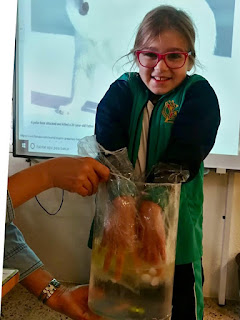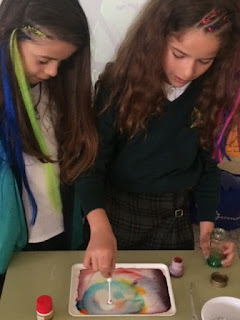We did a workshop today about using simple microscopes to see a variety of biological, chemical and physical objects. Here is a link to the slides.
Link:
Ideas Powerpoint Show
We looked at things like plant cells, pond creatures, crystals, material, micrometeorites and LCD screens.

We also looked at some ideas for experiments for younger children. I have posted the links to ppt documents in case you want to translate them into Spanish. They relate to the activities in the powerpoint show above.
Link:
Infantil/Primaro worksheets/fichas 1
Infantil/Primaro worksheets/fichas 2
Parachute men, cabbage jelly, flying seeds, sunlight energy, puddles, fast cars, floating boats, robotics and different materials. I hope these are useful!
Jenny
Hoy hicimos un
taller sobre el uso de los microscopios del cole para ver una variedad to coses
biológicas, químicas y físicas. Aquí es
un link para las diapositivas:
Miramos a los células
de una planta acuática, bichos del agua del Arroyo de Valdelatas, cristales de
sal, tela, micrometeoritos y como funcionen las pantallas LED.
Para los de
infantil y primero de primaria, incluye algunos experimentos con fichas. Arriba son las fichas en inglés en powerpoint
si quieres traducirles.
Son sobre:
Construir paracaídas
Gelatina que
cambiar color con pH
Semillas que vuelen
La energía del
sol
¿A dónde van los
charcos?
Rampas con
coches
¿Cuántos canicas
para hundir un barco?
Robótica súper
sencilla
Y Propiedades de materiales.
¡Espera que sean útiles!
Un saludo
Jenny





























